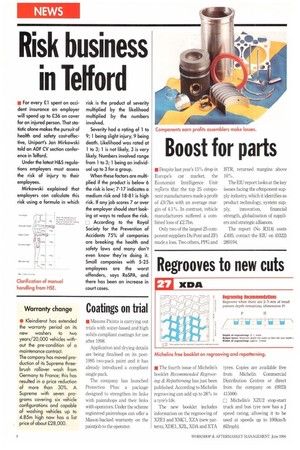Risk business in Telford
Page 92

If you've noticed an error in this article please click here to report it so we can fix it.
• For every £1 spent on accident insurance an employer will spend up to £36 on cover for an injured person. That statistic alone makes the pursuit of health and safety cost-effective, Unipart's Jan Mirkowski told an ADF CV section conference in Telford.
Under the latest H&S regulations employers must assess the risk of injury to their employees.
Mirkowski explained that employers can calculate this risk using a formula in which
risk is the product of severity multiplied by the likelihood multiplied by the numbers involved.
Severity had a rating of 1 to 9; 1 being slight injury, 9 being death. Likelihood was rated at 1 to 3; 1 is not likely, 3 is very likely. Numbers involved range from 1 to 3; 1 being an individual up to 3 for a group.
When these factors are multiplied if the product is below 6 the risk is low; 7-17 indicates a medium risk and 18-81 is high risk. If any job scores 7 or over the employer should start looking at ways to reduce the risk.
According to the Royal Society for the Prevention of Accidents 75% of companies are breaking the health and safety laws and many don't even know they're doing it. Small companies with 5-25 employees are the worst offenders, says RoSPA, and there has been an increase in Court cases.
















































































































